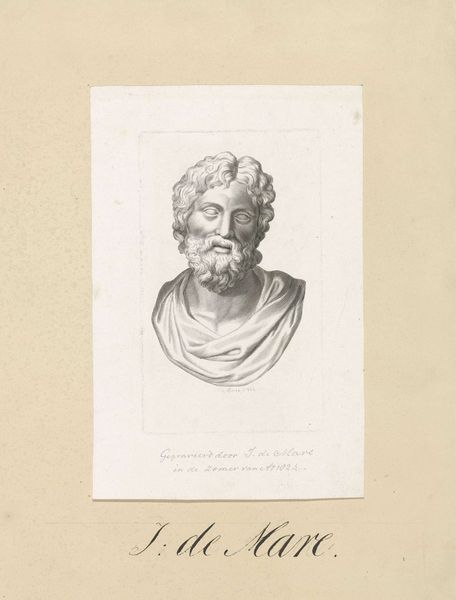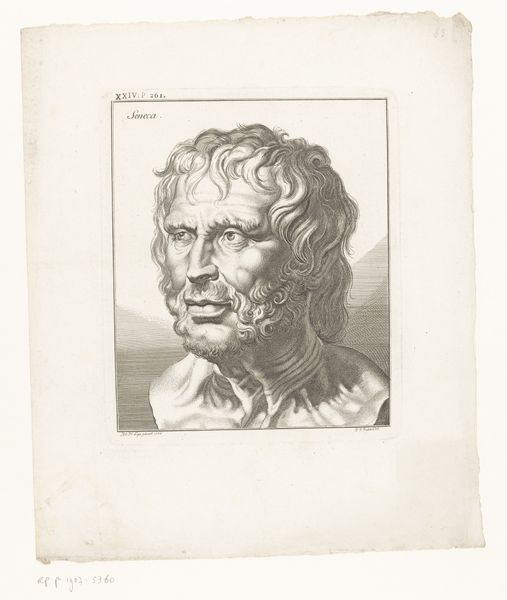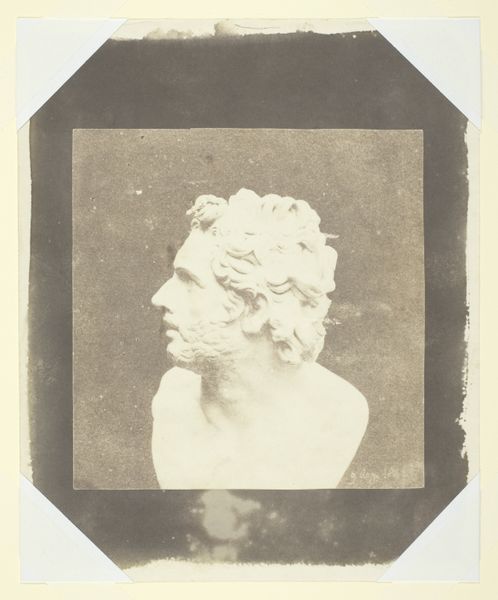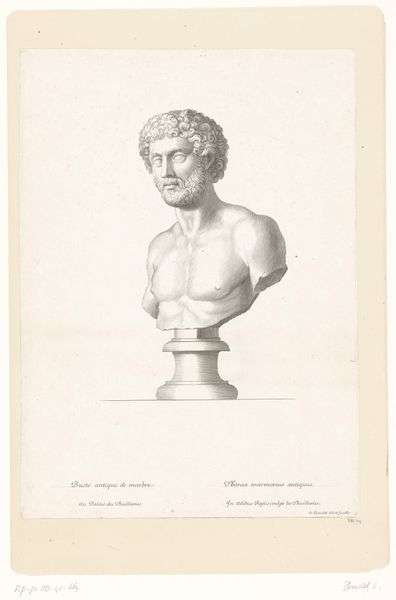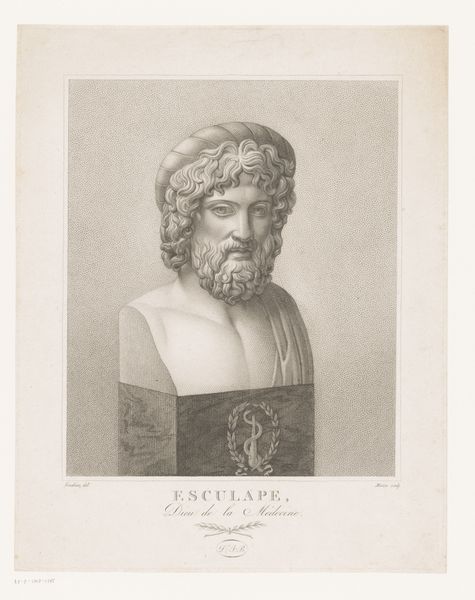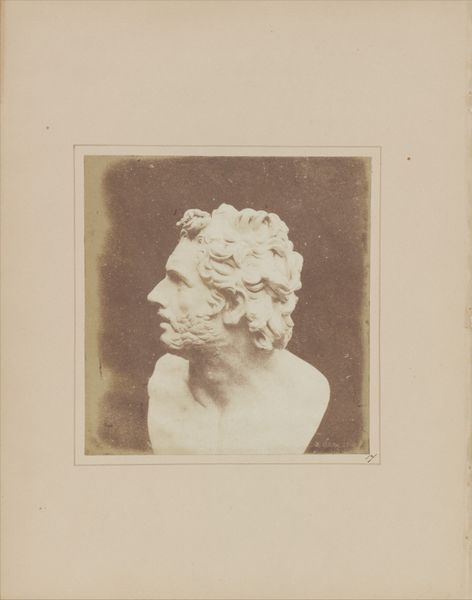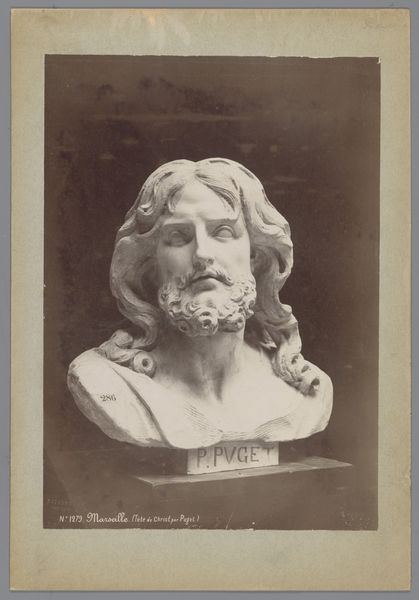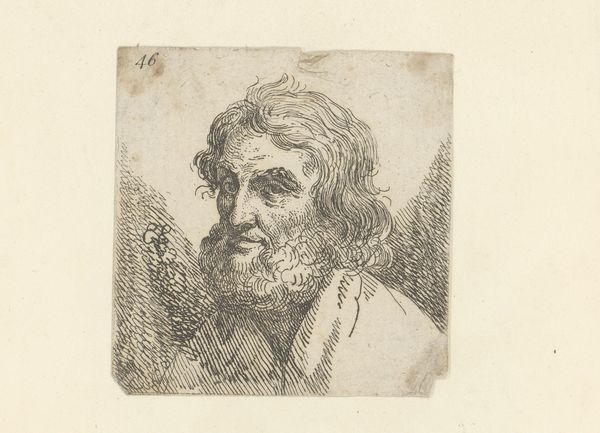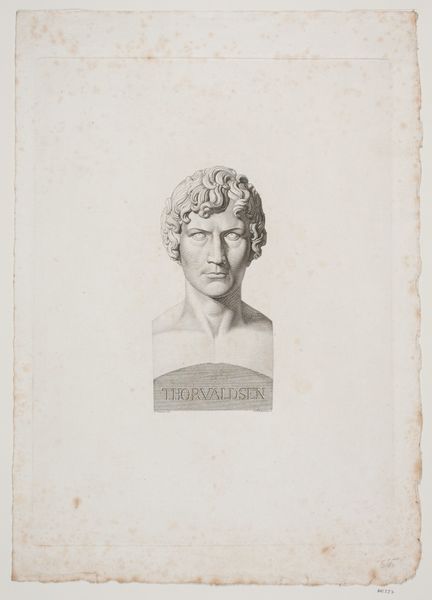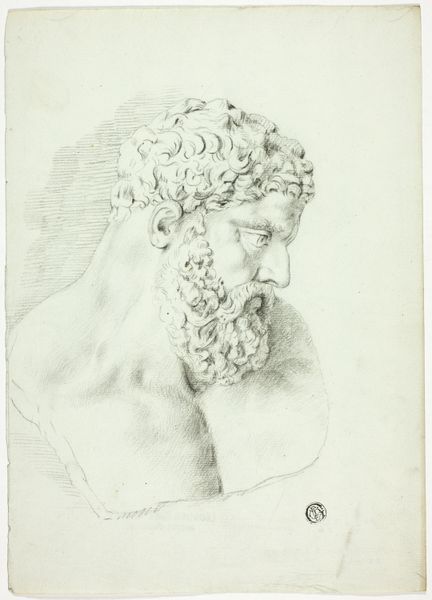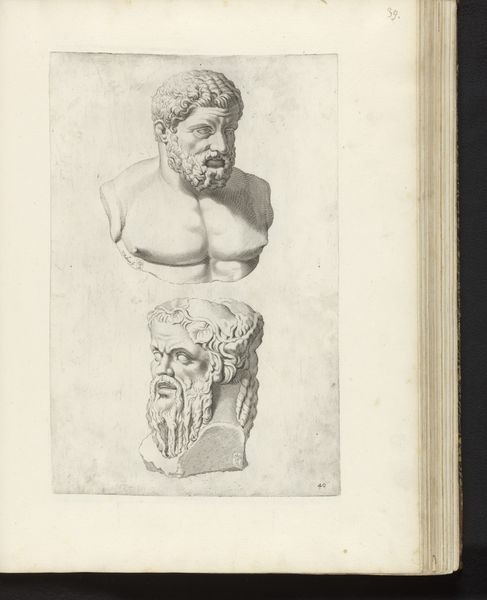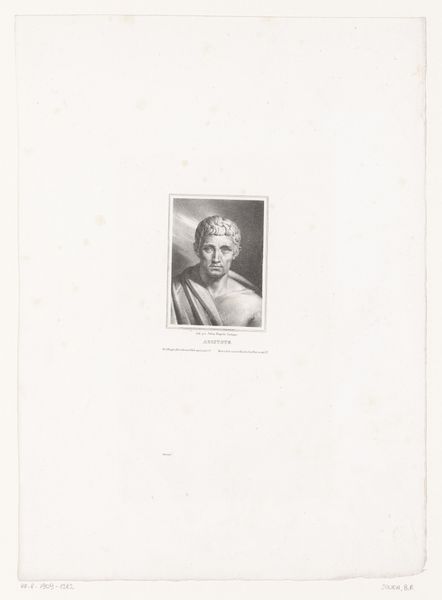
drawing, pencil, charcoal
#
portrait
#
pencil drawn
#
drawing
#
neoclacissism
#
pencil sketch
#
charcoal drawing
#
pencil drawing
#
pencil
#
pencil work
#
watercolour illustration
#
charcoal
#
history-painting
#
watercolor
Dimensions: height 344 mm, width 262 mm
Copyright: Rijks Museum: Open Domain
Editor: So, this drawing is "Portret van keizer Flavius Phocas," created sometime between 1824 and 1826 by Alexandre Evariste Fragonard. It’s currently housed at the Rijksmuseum, and it's made with pencil and charcoal. It gives off a very neoclassical vibe, doesn’t it? How do you interpret this work? Curator: Absolutely. What strikes me first is the interplay between the purported subject matter—a Roman emperor—and the chosen medium. Pencil and charcoal are readily available, easily transportable materials. Were these available materials mirroring a shifting perception of power and how it could be created and represented in 19th-century France? Editor: That's fascinating! I hadn’t considered the availability of the materials themselves speaking to the accessibility—or lack thereof—of power. Curator: Consider the act of drawing itself. It's reproducible. This image becomes readily accessible compared to, say, a unique marble bust of the emperor. Doesn't this process democratize the image, almost putting the power of representation in the hands of the artisan? Editor: I guess so. The ability to replicate this portrait and disseminate it widely would have a huge impact. Did that potentially strip the emperor of some of his mystique? Curator: Precisely. It challenges this top-down mode of idealizing authority and speaks to a more grounded understanding of the emperor’s influence and standing. The choice of using accessible drawing materials creates a portrait that's less about unattainable, sculpted heroism and more about the accessible materiality of representation itself. Editor: I learned that analyzing art materials and thinking about how it challenges social boundaries brings forth an approach that questions traditions. Curator: Indeed, it reveals the connection between material, making and social awareness.
Comments
No comments
Be the first to comment and join the conversation on the ultimate creative platform.
